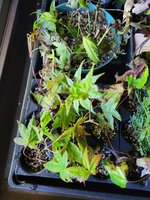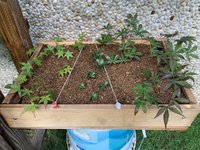MaxChavez
Yamadori
Hi there,
I'm new to the cutting propagation world. Do people really get cuttings that stay perky all the way through the process? I seem to get a substantial wilt and sometimes complete rot on the leaves after about 2 weeks. I've also seen several YouTube videos, that start off great and end with, "well, they all died"
I'm all for documentation, but..
I guess my questions are:
Is some wilt common and let the stem keep going?
Trim off the wilted leaves as they fall or just leave them alone?
Thanks
I'm new to the cutting propagation world. Do people really get cuttings that stay perky all the way through the process? I seem to get a substantial wilt and sometimes complete rot on the leaves after about 2 weeks. I've also seen several YouTube videos, that start off great and end with, "well, they all died"
I'm all for documentation, but..
I guess my questions are:
Is some wilt common and let the stem keep going?
Trim off the wilted leaves as they fall or just leave them alone?
Thanks


